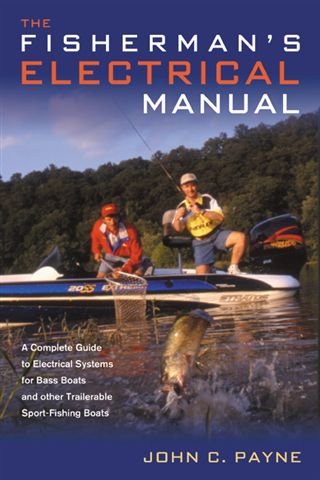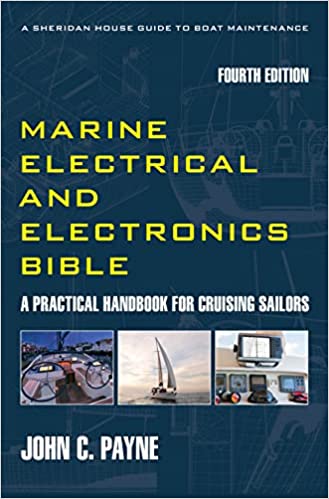Boat trailer wiring in Australia
Boat trailer wiring in Australia must comply with strict standards to ensure road safety, legal compliance, and reliable performance. Whether towing a small dinghy or a large offshore vessel, understanding the wiring system is essential for safe transport. Way too many trailer wiring installations are faulty.
Australia has a standard wiring code on most trailer wiring and there is a standardized 7 pin system implemented after 1988.
There are also many older 6 and 12 pin connectors in use that don’t always follow the code, so in most cases its trial and error when wiring up and repairing trailer connectors.
Make a regular check of your boat trailer wiring, in particular look inside light fittings and the ends of wires into light fitting terminals for indications of degradation and impending failure.
If the copper wiring has become blackened it’s rotting out due to galvanic action of saltwater and will need replacing.
Many people assume it's a non-maintainable system but any electrical system that gets wet with saltwater every weekend is very prone to failure. Look at how you can improve the system with the newer LED type lights and ones that are completely encapsulated against water ingress. This is the most common failure mode in boat trailers, and the highway patrol just love writing out infringement notices and tickets for faulty lights. Think about this, if your brake lights on your boat trailer do not function and someone runs up your rear end and wrecks your boat, it is all on you! Could be an expensive event destroying big outboard engines plus the boat. Your insurer also may decline to accept the claim.
Boat Trailer Wiring in Australia
The most common boat trailer wiring configuration in Australia is the 12-pin flat plug, governed by AS4177.5-2004, which defines wire colours and functions. Key assignments include:
- Yellow: Left turn signal
- Green: Right turn signal
- Red: Brake lights
- Brown: Tail and marker lights
- White: Ground
- Blue: Electric brake power
- Black: Reverse lights
- Orange/Pink/Grey/Violet: Auxiliary functions
Smaller boat trailers may use a 7-pin flat or round plug, which supports basic lighting but lacks capacity for electric brakes or auxiliary power. Compatibility between trailer and tow vehicle plugs is crucial — mismatched connectors can cause signal loss or malfunctioning lights.
Common wiring issues include:
- Corrosion: Saltwater exposure degrades connectors and wires, leading to poor conductivity. Using marine-grade components and applying dielectric grease helps prevent this.
- Grounding faults: A weak or rusted ground connection can cause flickering or non-functional lights. Ensuring a clean, secure ground to the trailer frame is essential.
- Damaged wiring: Wires may chafe, pinch, or degrade from UV exposure. Protective conduit and regular inspections reduce the risk of shorts or open circuits.
- Incorrect wiring: DIY repairs or retrofits often lead to miswired plugs. Following the AS4177.5 standard and using wiring diagrams ensures proper function.
Safety and reliability depend on disciplined maintenance. All circuits should be protected by fuses or circuit breakers, and wiring must be capable of handling the required load current. Moisture protection, mechanical shielding, and temperature resilience are also critical for long-term performance.
For boat owners upgrading to LED lights, compatibility with existing wiring is key. LED's draw less current and may require resistors or updated controllers to avoid hyper-flashing or failure, so read the installation instructions carefully. There area good range of boat trailer lights at Supercheap Auto, Repco or online.
About boat trailer wiring in Australia
Usually the cable breaks with vibration when on the road and your lights start failing as they break, before you know it the highway patrol is stopping you and issuing you with a ticket for your faulty boat trailer wiring. So common I am sorry to say. Even worse is your brake lights don't work and someone hits you from behind and the bad news is its your fault, and a very large insurance payout not to mention the loss of you boat in serious cases.
This is unfortunate as it was probably okay when you checked before you left home, and it's vibration that finally cost you dearly.
About boat trailer wiring in Australia
When boat trailer wiring is being renewed use tinned copper wires if possible, it will save you a very hefty fine and it would have been cheaper to rewire the trailer in the first place.
7 Pin Connectors
1 – Yellow – Left hand Indicator Light
2 – Black – Reversing (backup) light
3 – White - Ground/earth
4 – Green - Right hand indicator light
5 – Blue - Service/trailer brakes
6 – Red - Stop (brake) light
7 – Brown - Tail, license, clearance light
12 Pin Connector
8 – Orange - Battery charger/winch
9 - Pink - Auxiliaries/battery feed
10 – White - Ground/earth
11 – Grey - Rear fog light
12 – Violet – Spare
In summary, boat trailer wiring in Australia demands attention to standardisation, corrosion resistance, and proper grounding. Regular checks, quality components, and adherence to national standards ensure safe towing and peace of mind on the road.
All about boat trailer wiring in Australia is here with all you need to know about boat trailer parts.

